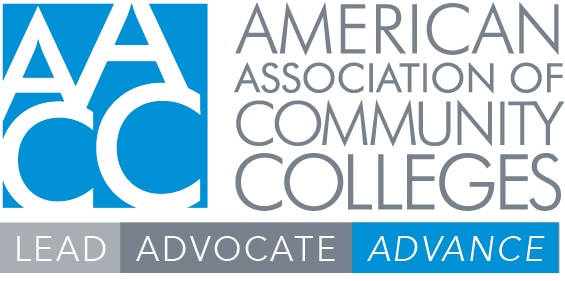The American Association of Community Colleges (AACC) last week submitted extensive comments to the U.S. Education Department (ED) concerning the department’s proposal to create a list of higher education programs that provide “low financial value.”
The primary focus of ED’s January 10 Request for Information (RFI), and its solicitation of stakeholder views, was on programs that create debt burdens that cannot be easily retired given the earnings of program completers. The RFI stated that “misalignment of prices charged to financial benefits received may cause particularly acute harm for student loan borrowers who may struggle to repay their debts after discovering too late that their postsecondary programs did not adequately prepare them for the workforce.”

That said, the RFI asked for input on a variety of issues, including ways in which the non-financial value of programs might be determined.
The political and policy backdrop to the RFI is obvious – the Biden administration has made enormous commitments to federal student borrowers, both in the form of its loan cancellation proposals (now pending before the Supreme Court) as well as a plan to provide a dramatically more favorable repayment option to loan borrowers. (AACC also submitted comments on that Notice of Proposed Rulemaking, focusing on the loan balance, low-income borrowers — i.e., the bulk of community college borrowers.)
The “low financial value” initiative is ED’s effort to infuse a measure of accountability into the federal student financing system. But it has no sanctions attached to it, in contrast to the gainful employment regulations that can render a program ineligible for Title IV assistance.
Public’s perception, inevitable errors
The RFI has two general prongs – one focused on determining programs of “low financial value,” which understandably grabbed headlines – and a less emphasized one, concerning general public disclosure policies. AACC, along with the American Council on Education (ACE) and others, criticized the low financial value policy. AACC’s comments said that a list of low financial value programs would “stigmatize programs and leave them prone to misunderstandings by prospective students and the public. It is the type of judgment that is best made by potential students, families, and their academic advisors – not the U.S. Department of Education.”
AACC’s comments also noted that since all higher education programs – more than 50,000 are offered at community colleges – would be subject to the new review, errors would be inevitable. In addition, the association pointed out that a “cliff effect” might attach, in which some programs would just barely fall into the low financial value category, while others would scrape by. (Without providing specifics, ED’s announcement also said that programs of low financial value would be asked by ED to submit a plan for improvement.)
The association also noted that programs of low financial value might ultimately provide critical entry to higher education for many students.
Non-financial value is murky, too
ED also asked for input on how to assess the nonfinancial value of programs. While programs clearly yield myriad nonfinancial benefits to students, it would be novel for the federal government to undertake this determination on such a broad basis. AACC’s comments noted that the non-financial aspects of programs “are not susceptible to easy classification that would help others in their choice of academic programs. Institutions and other individuals with a deeper understanding of the particular offering are better situated to help prospective students evaluate a programs’ full significance.”
Better, broader disclosures
While AACC raised concerns about some core aspects of the RFI, it also encouraged the department to move aggressively forward in developing and making available to the public appropriate, detailed information about program outcomes. This perspective stems from AACC’s longstanding position that data concerning program outcomes benefit students, families, institutions and policymakers alike.
Congress’s inaction on creating a student-level data system via the College Transparency Act or a similar vehicle has, as the association’s comments stated, hobbled the executive branch from developing comprehensive data about student progress, completion and post-graduate outcomes.
In AACC’s eyes, the lack of such a system deeply compromises national efforts to pursue true accountability. The nub of the matter is that current federal data systems only capture, at the student level, information on those who receive federal aid. At community colleges, this is barely half of all students. As the association’s comments state, these students tend to be low-income, and, in general, have lower levels of academic success than more affluent students.
Desirable metrics
With these limitations in mind, AACC’s comments nevertheless encouraged ED to develop basic data sources concerning student debt and earnings, that were a central focus of the department’s “low financial value” proposal. AACC endorsed making available for all programs calculations of debt-to-earnings – the central metric of previous “gainful employment” regulations – and basic earnings information. These data will be imperfect and are only averages; they cannot tell a prospective student what will happen to them after they graduate. But, in AACC’s eyes, they are far better than nothing.
And rather than assigning ED the role of designating certain programs as being of “low financial value” on this basis, AACC believes that students and others are best placed to decide whether a program, with all its facets, is best suited for them, and whether it provides adequate “financial value.” AACC also encouraged ED to facilitate institutions providing non-financial information about program outcomes, including industry certifications, licensure and other credentials.
In addition, AACC provided comments on the display or organization of whatever metrics ED ultimately lands on, the use of the Classification of Institutional Program (CIP) code, how the value of public, rather than individual, investments in education programs might be determined, and other issues.
All indications are that ED intends to move forward with its plan this spring.





